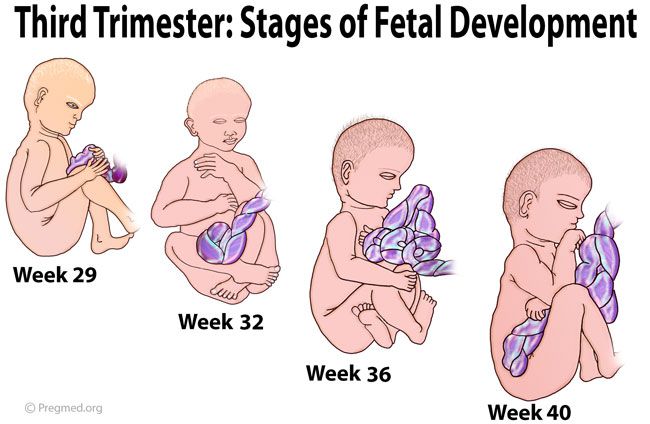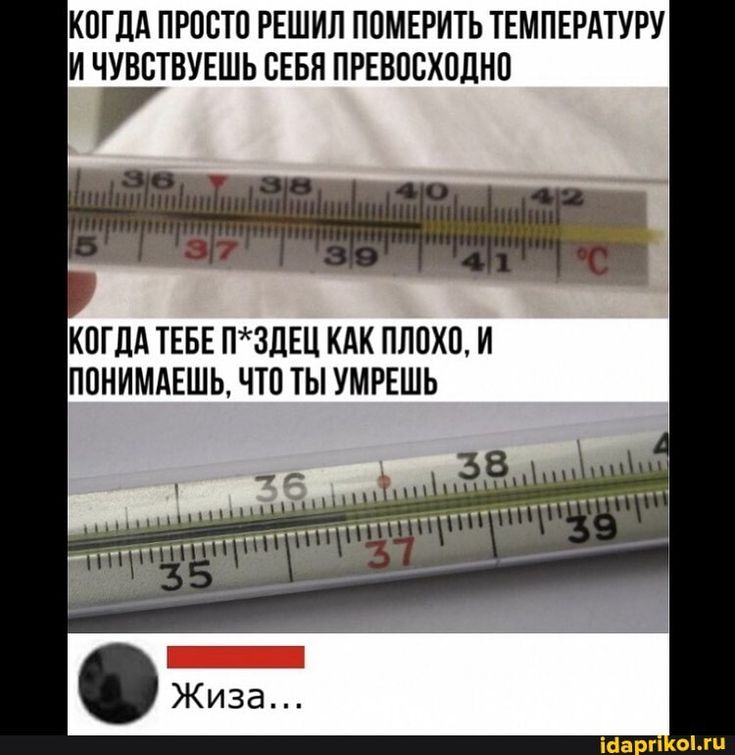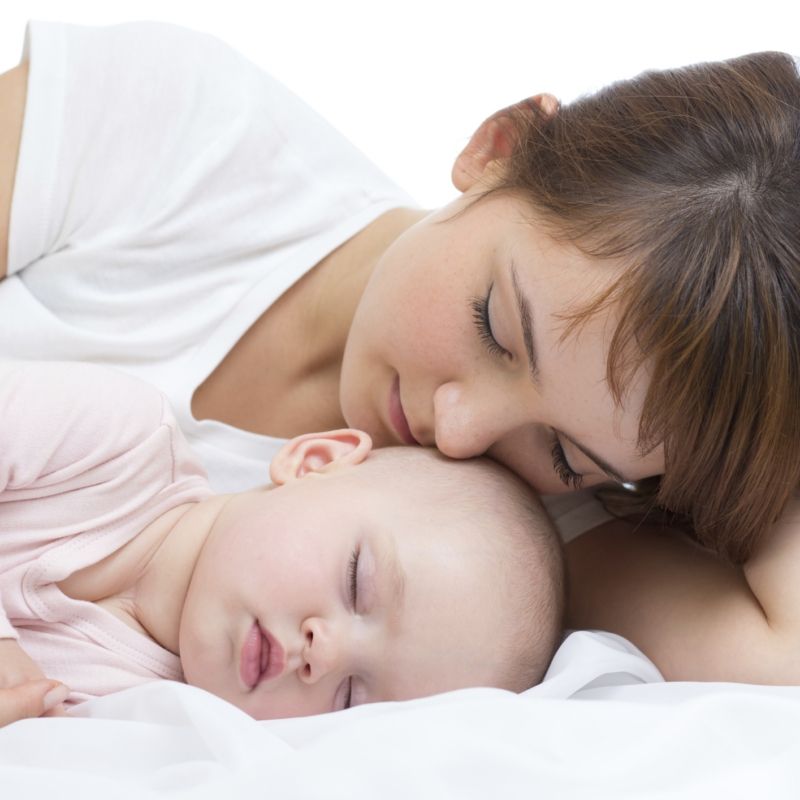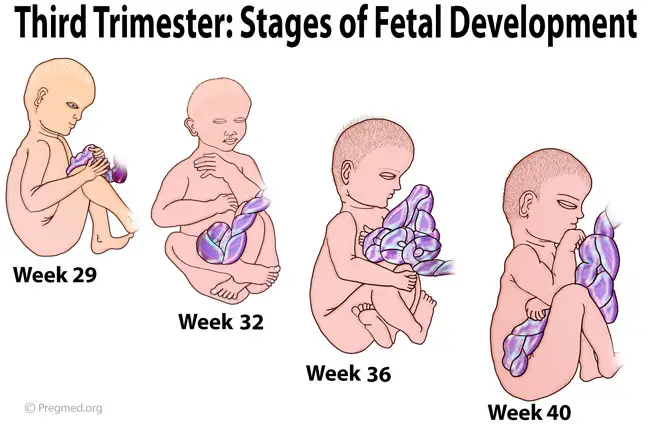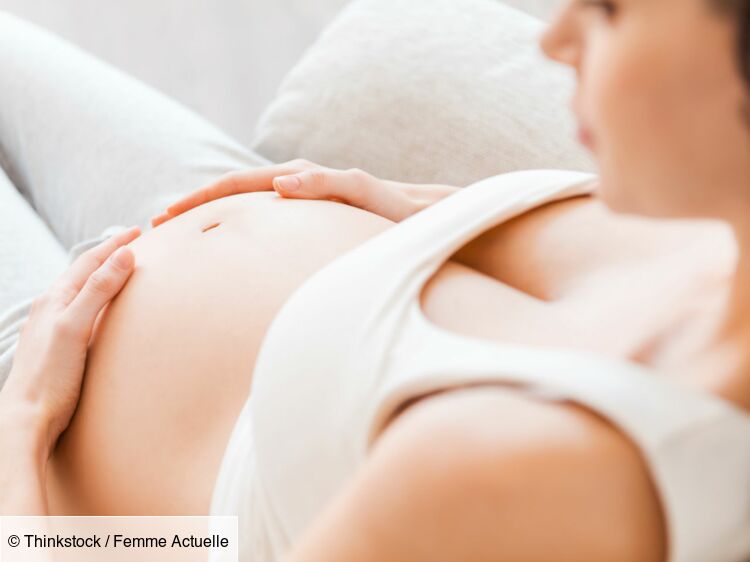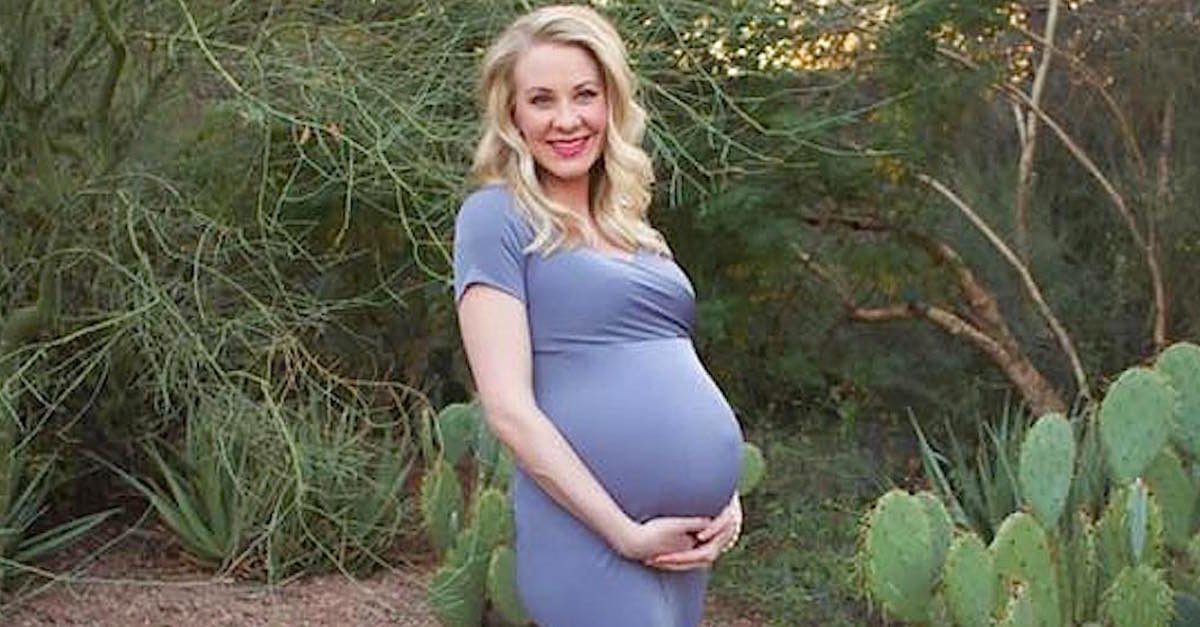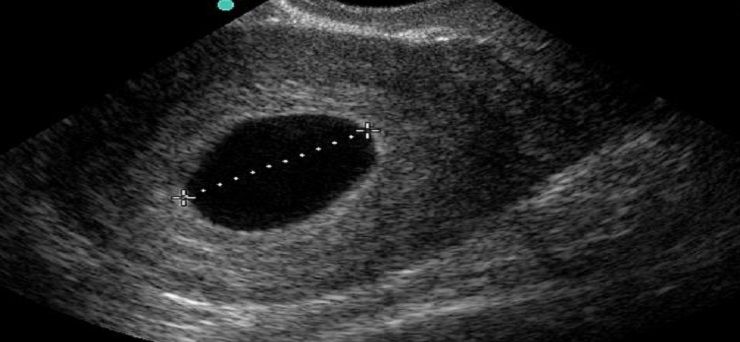Motor skills for child development
Gross motor skills: birth to 5 years
What are gross motor skills?
Gross motor skill development involves the large muscles in the arms, legs and torso. Gross motor activities are important to everyday physical activities like walking, running, throwing, lifting, kicking, etc. Gross motor abilities also form the basis for fine motor skills and relate to body awareness, reaction speed, balance and strength. Learn more about all developmental milestones by age.
Gross motor development milestones: General physical activity guidelines for children ages 0 to 5 years
Newborn to 2 months- Turns head to both sides while on back
- Lifts head and able to turn to both sides while on belly
- Head lag with pull to sit
- Kicking both legs and moving both arms equally while on back
- Performs tummy time on floor regularly
- Raises head in line with trunk when pulled to sit
- Pushes up on forearms and turn head side to side while on belly
- Tolerates tummy time well
- Rolls from belly to back
- Rolls from back to belly
- Brings feet to mouth laying on back
- Pushes up on hands with arms extended while on belly
- Pivots in a circle while on belly to each side
- Sits alone
- Reaches for toys to play in sitting
- Catches self with loss of balance in sitting
- Crawls on belly
- Moves between laying down and sitting upright without help
- Crawls on hands and knees
- Pulls to a standing position with one foot leading
- Cruises around furniture
- Walks with two hands held
- Walks with one hand held
- Stands alone for a few seconds
- Crawls up stairs
- Stands up from the floor without support
- Walks alone well
- Squats and stands back up without holding onto support
- Walks up stairs with hands or rails to help
- Crawls down the stairs (on belly, feet first)
- Can run, though falls easily
- Kicks a ball forward
- Walks and runs fairly well
- Jumps in place with both feet off the ground
- Walks up and down stairs alone
- Kicks a ball with either foot
- Balance on one foot for a few seconds
- Jump forward 10-24 inches
- Catches a large ball
- Rides a tricycle
- Can run, jump and climb well, is beginning to skip
- Hops proficiently on one foot
- Can do hopscotch
- Catches a ball reliably
- Begins somersaults
- Skips on alternate feet and jump rope
- Begins to skate and swim
- Rides bicycle with/without training wheels
- Climbs well
This information is a general guide to help you determine if your child is progressing at the rate expected for his or her age. Please keep in mind that each child is unique and develops skills at their own rate.
Physical activity recommendations
By exploring many different types of movement, your child can build the confidence, motivation and physical competence to engage in an active lifestyle.
According to the American Heart Association, a daily dose of at least 60 minutes of moderate-to-vigorous physical activity is recommended for children ages six to seventeen years old. Infants and toddlers are recommended to get 180 minutes of activity spread throughout the day based on the American Academy of Pediatrics. It is suggested that both structured play as well as unstructured play should be incorporated throughout the day.
Ideally, children should participate in 60 minutes of continuous activity. However, for both older children and toddlers the daily amount of activity can be split up throughout the day. For example, two 30-minute segments or four 15-minute segments for children is still beneficial.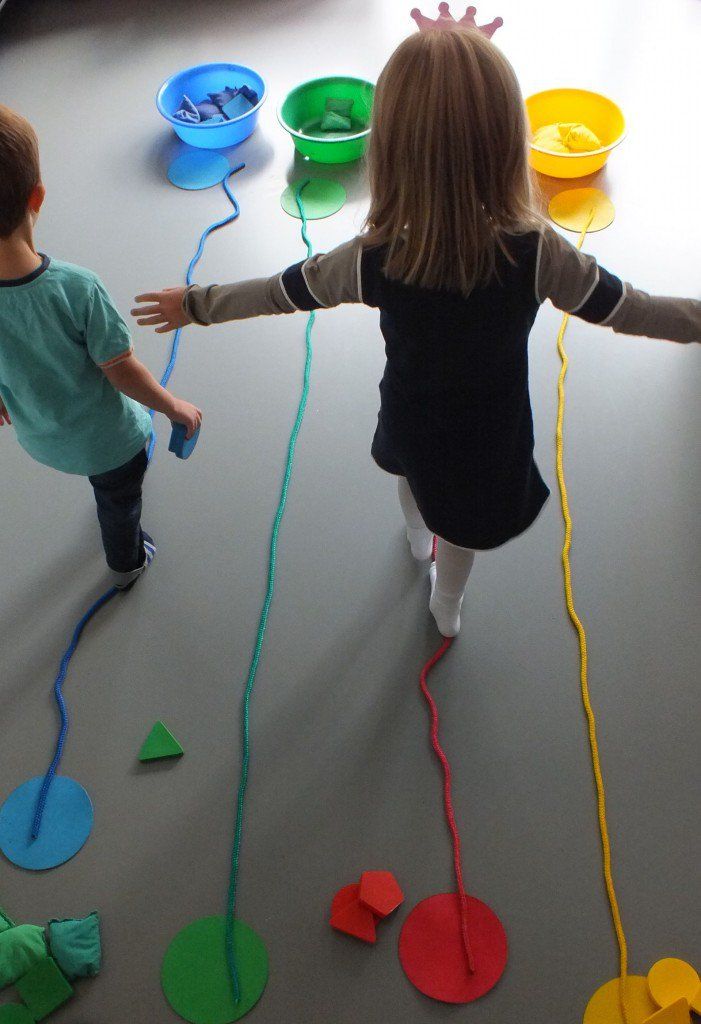 Whether you’re at home or on the playground, here are some activities, that with proper guidance, may encourage your child to get moving: •
Whether you’re at home or on the playground, here are some activities, that with proper guidance, may encourage your child to get moving: •
Indoor:
- Infants/toddlers: crawling and walking over various surfaces such as creating obstacles with pillows and blankets; sitting with support at torso on an exercise ball, mommy/daddy and me classes (yoga, tumbling, swimming)
- Children: bounce house play, jump rope activities, yoga, dance, gymnastics, cheerleading
Outdoor:
- Infants/toddlers: mommy/daddy and me swim classes; water play in buckets or playing at water tables; infant/toddler swings or slides at the playground; obstacles over various surfaces such as gravel, grass
- Children: swimming, sprinkler water play, water parks, marco polo, ice skating, snow tubing, sledding, roller skating, skateboarding, playgrounds, riding scooters, tricycle and bicycle riding, hiking, jumping and hop scotch activities, soccer, baseball, swinging
Our therapy programs can also help bring out the best in your child.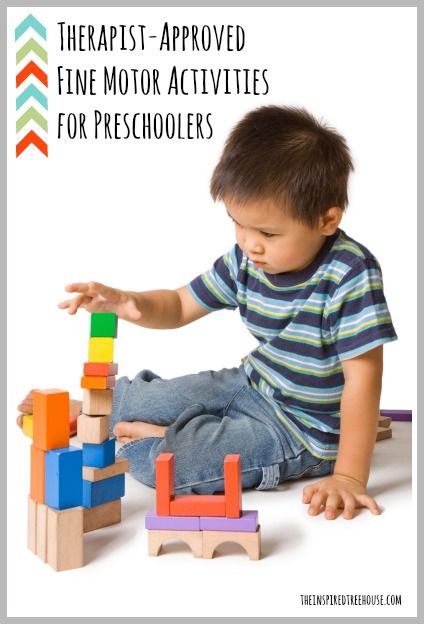 From aquatic therapy, to sports therapy and more, our team takes an integrated approach, using the right therapy or therapies your child needs at the right stage in their development. We can help your child learn or regain the skills they need to be successful during everyday activities and participate with peers.
From aquatic therapy, to sports therapy and more, our team takes an integrated approach, using the right therapy or therapies your child needs at the right stage in their development. We can help your child learn or regain the skills they need to be successful during everyday activities and participate with peers.
Problems with reaching developmental milestones? How to improve your child’s gross motor skills
If you have concerns regarding your child’s development or your child is regularly missing development milestones, physical therapy can assess development and address concerns. If you are concerned about your child's development of gross motor skills, a physician or therapist may be able to assist with an evaluation.
Physical therapists can provide a comprehensive examination of your child’s strength, balance, coordination and gross motor skills in order to determine barriers to safe body movement. We provide therapeutic activities that are engaging and specific to a child’s age, cognitive status, ability level and interests.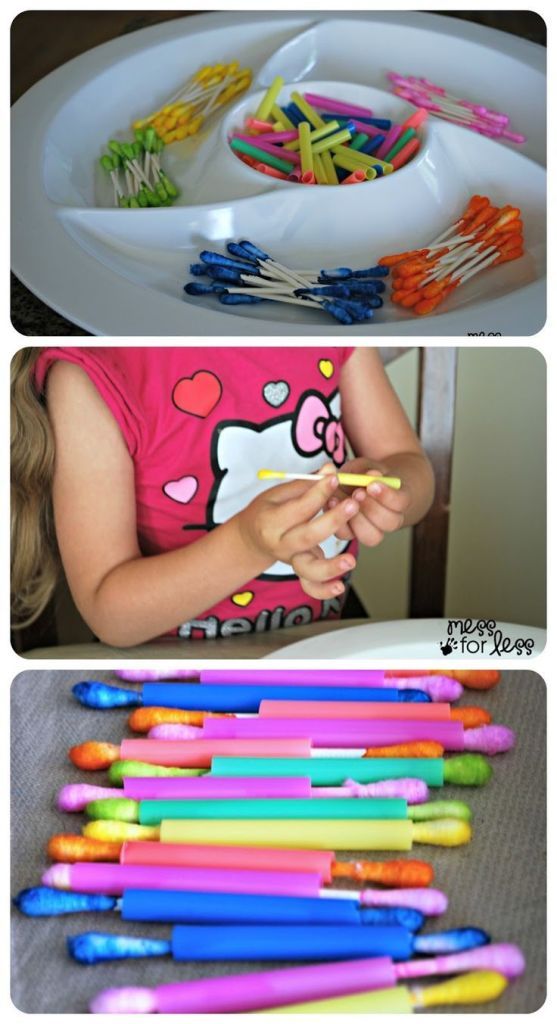
To make an appointment with a pediatric physical therapist, call one of these locations:
- Bon Air Therapy Center 804-323-9060
- Brook Road Campus 804-228-5818
- Fredericksburg Therapy Center 540-891-4485
- Glen Allen Therapy Center 804-273-6656
- Petersburg Therapy Center 804-733-7233
- Stafford Therapy Center 540- 659-7337
Information provided by Kristen McBee PT, DPT; Anisha Craft PT, DPT, PCS; Renee Leiby PT, DPT and Jan Steinberger PT, DPT.
Help your Baby Develop Motor Skills
Why Are Motor Skills Important?
Motor skills are essential for baby's physical strength and movement
Motor skills are used everyday throughout our lives. They help us move and do everything from lifting heavy items to typing on a keyboard. Motor skills and motor control begin developing after birth, and will progress as children grow.
Having good motor control also helps children explore the world around them, which can help with many other areas of development.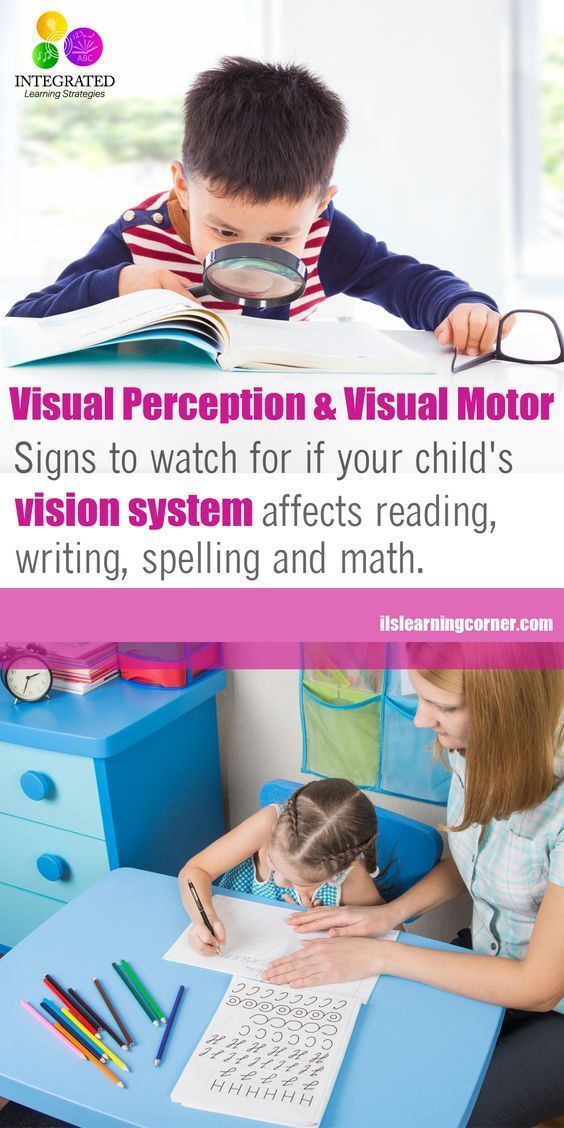
Motor skills are broken up into two categories: gross motor skills and fine motor skills. Mastering both are important for children’s growth and independence.
Gross motor skills are movements related to large muscles such as legs, arms, and trunk.
Fine motor skills are movements involving smaller muscle groups such as those in the hand and wrist.
Watch the Parents' Guide to Fine Versus Gross Motor Skills:
Motor Skills: Know the Basics
Why does my child need motor skills?
- To be able to move and complete tasks independently
- To be able to explore the world around them, which promotes cognitive, speech, and sensory development
- To give them confidence and independence, which promotes skills such as executive function
- To meet developmental milestones
- To possibly help prevent early motor delays and conditions that can interrupt development
When should my baby start developing motor skills?
As a newborn! They will begin developing core motor skills as soon as they start moving.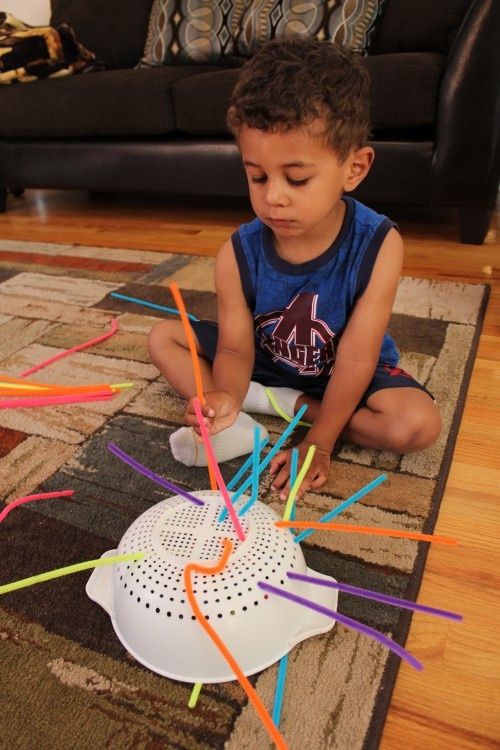 Sign up for the Baby Games Calendar or visit our Baby Games page to learn more about the physical activities that are age-appropriate for your little one, to help them make progress on their motor skills every week.
Sign up for the Baby Games Calendar or visit our Baby Games page to learn more about the physical activities that are age-appropriate for your little one, to help them make progress on their motor skills every week.
How often should my child work on their motor skills?
The short answer: every day!
As they get older, your little one will be working their motor skills every day just by going about their daily routine and getting more involved in activities! However, for infants and toddlers, they may need extra stimulation to work their motor skills. Make sure you are encouraging physical movement and development of these skills on a daily basis.
What are some important motor milestones?
All motor milestones are important! Which means it’s crucial to ensure your baby is meeting their milestones. You can find all motor milestones or learn more from the Assure the Best brochure.
The achievement of one milestone tends to lead to another. So for example, while babies typically do not crawl until 7-9 months, they achieve plenty of other milestones before that so they have the strength and confidence to crawl.
So for example, while babies typically do not crawl until 7-9 months, they achieve plenty of other milestones before that so they have the strength and confidence to crawl.
Learn more about encouraging your baby to crawl!
Motor Milestones
Check off your baby’s motor milestones with our helpful and FREE brochure and checklist!
Learn more about baby's motor milestones with the Assure the Best brochure.
Download the Brochure
The Milestone Checklist helps parents keep track of their children’s motor, sensory, communication and feeding milestones, from birth to 3 years old. Also available in multiple languages.
Download the Checklist
Why Sleep Matters for Motor Skills
Changing baby's sleep direction can help strengthen baby's neck muscles and head control
Changing head direction can help prevent positional plagiocephaly (flat head) and positional torticollis, by encouraging baby to move their head and strengthen both sides of their neck.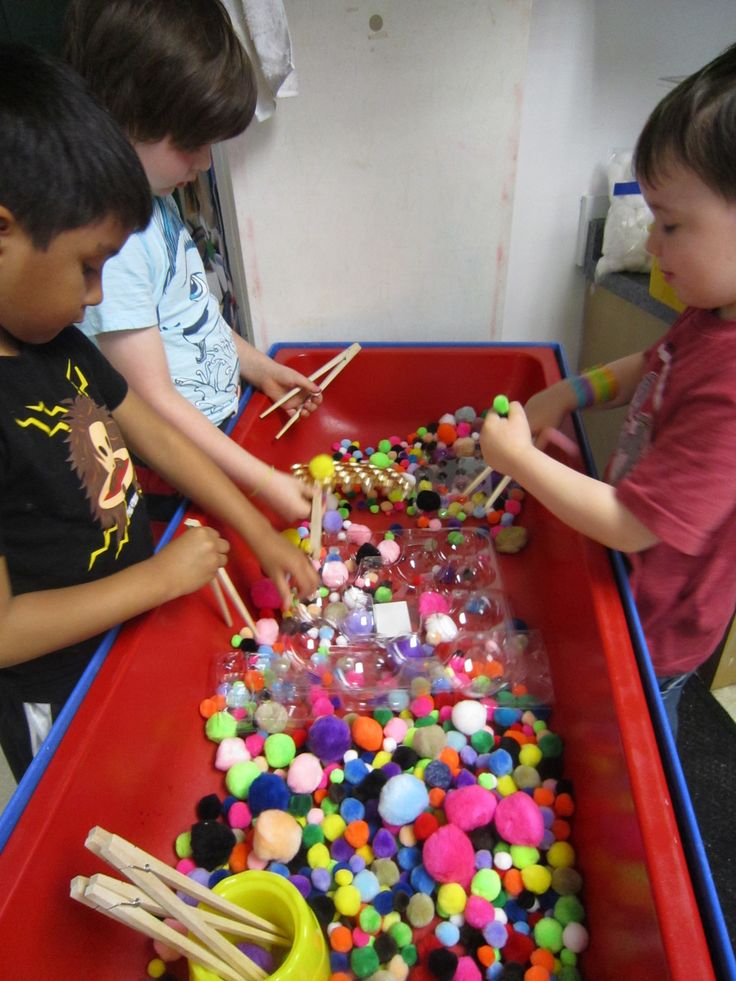 When baby faces different directions as they lay, they also vary the direction they turn their head in response to a noise (such as a parent entering the room). This strengthens neck muscles more evenly on both sides, and changes the places where baby puts pressure on their head as they lay.
When baby faces different directions as they lay, they also vary the direction they turn their head in response to a noise (such as a parent entering the room). This strengthens neck muscles more evenly on both sides, and changes the places where baby puts pressure on their head as they lay.
Learn More
Motor Activities
Great ways for children to work their motor skills every day!
Much of your child’s fine and gross motor development can happen right at home! Learn more about some ways to keep them moving every day.
Help baby make progress on their motor skills every week!
Sign up for the Baby Games Calendar or visit our Baby Games page to learn more about the physical activities that are age-appropriate for your little one.
Sign Up Today
What to Watch For
What are some behaviors to watch out for that could affect my child’s motor skills?Children outgrow many of the behaviors that can interrupt motor development.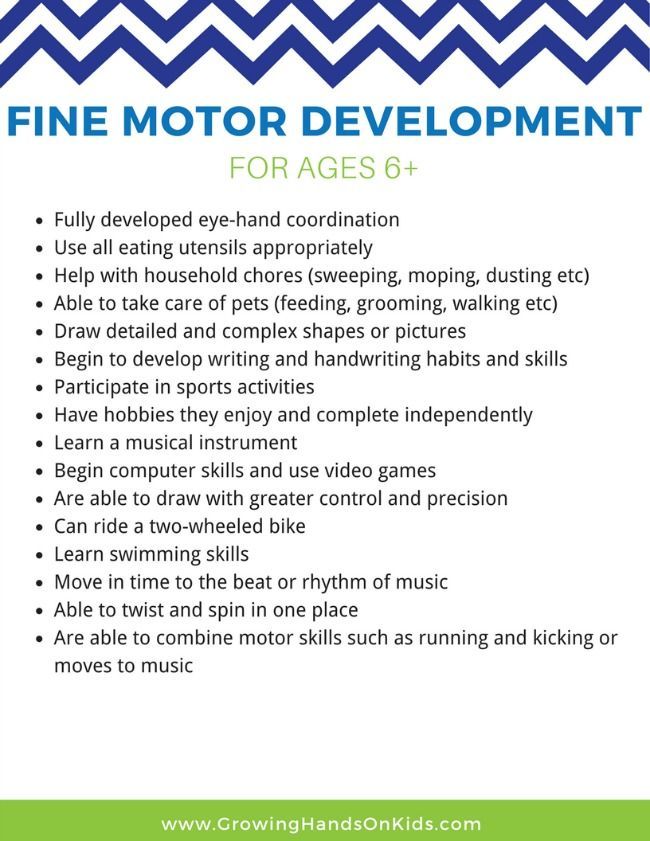 Some common ones to watch out for include:
Some common ones to watch out for include:
- Toe-Walking
- Chewing on items they shouldn’t be chewing on
- Falling often or having trouble lifting their head
- W-Sitting
Watch to see what w-sitting is and why it matters:
Typical and Atypical Motor Development
Motor behaviors that should be addressedWhat do typical and atypical development look like? What should it look like when baby begins to sit, crawl, and walk? In the below graphics, see what typical and atypical development look like. Typical development is in blue, and means baby is right on track; atypical development is in yellow, and means that baby may have a motor delay.
If you suspect a motor delay, reach out to baby’s healthcare provider to find out what may be causing this delay. Early intervention is essential for addressing development issues and preventing further delays.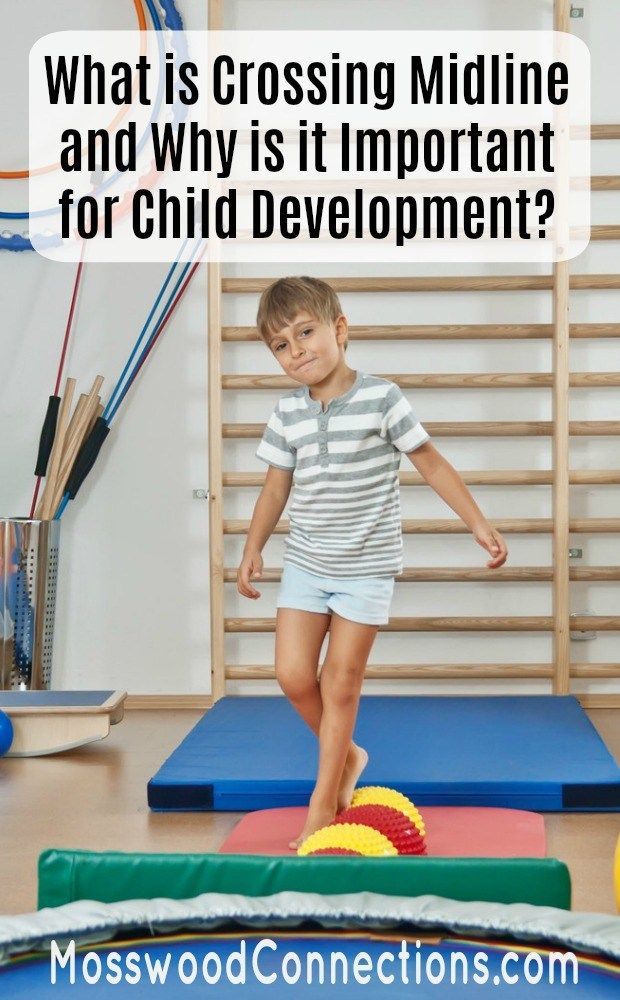
How to develop fine motor skills in a child
Today we will look at what fine motor skills are, its features, ways of development using games and toys as examples, as well as the optimal age to start its development. Why is this issue getting so much attention? Let's figure it out together.
Article content:
- What is fine motor skills
- Features of the development of fine motor skills
- Games and exercises aimed at developing fine motor skills
- Lessons for the development of fine motor skills in children
- Fine motor toys
- At what age should you develop fine motor skills
- Terminals
What is fine motor skills
Fine motor skills are the sequence and precision of movements required to perform various actions with small objects using the hands, fingers and toes.
Fine motor skills can be traced in children from an early age, when they are just learning to hold a toy.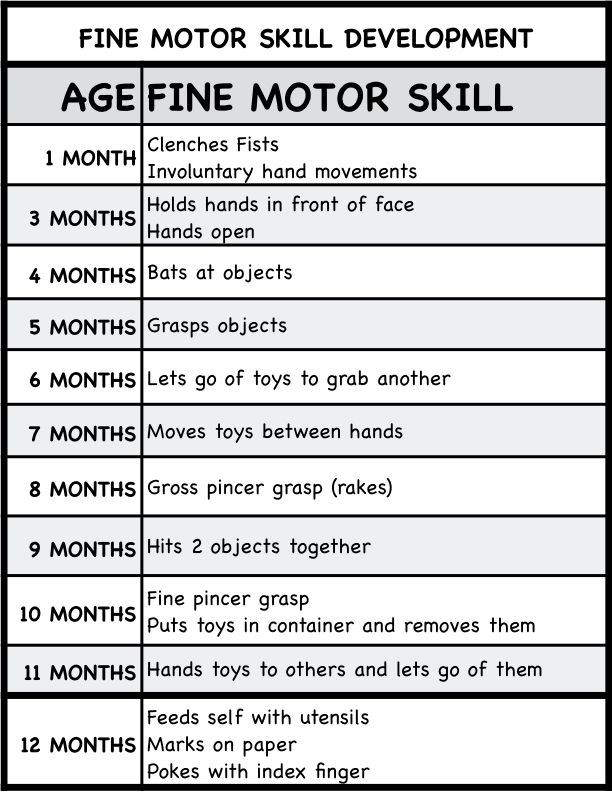 First comes the development of the hand, finger movements, then the formation of speech is formed. The formation of speech through the development of fine motor skills occurs due to the influence of nerve endings on the brain regions responsible for motor skills and speech, which are located next to each other.
First comes the development of the hand, finger movements, then the formation of speech is formed. The formation of speech through the development of fine motor skills occurs due to the influence of nerve endings on the brain regions responsible for motor skills and speech, which are located next to each other.
In addition to the main function - the development of speech - fine motor skills affect the development of mental processes: thinking, memory, imagination, ability to orientate in space.
Features of the development of fine motor skills
The ability to master fine motor skills in children does not develop by itself, that is, it does not have a hereditary factor. Of great importance in this matter are adults who, by their example, involve the child in various activities, develop him systematically and purposefully. This hypothesis was first put forward by the Russian scientist Ivan Mikhailovich Sechenov. Subsequently, other scientists, doctors, teachers and specialists in various fields began to focus on this opinion as a key one.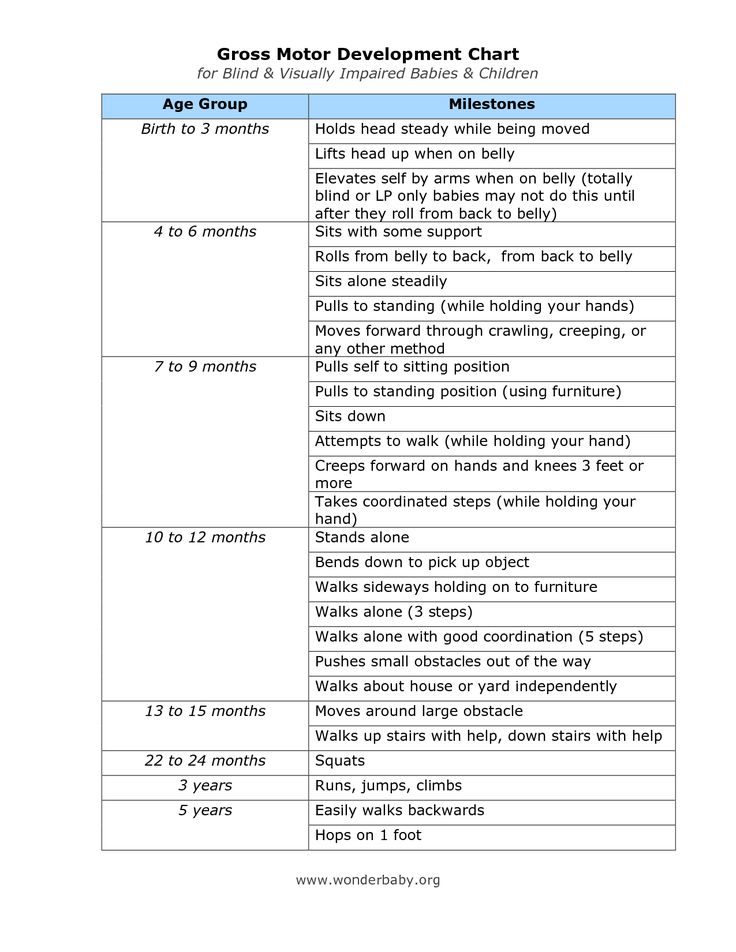
Why is such attention paid to the development of fine motor skills? For children, it means the formation of basic skills and abilities.
- The speech of the child is formed, which contributes to a comfortable stay in the children's team.
- Skills of various movements are developed. The child can play with toys on his own without distracting an adult.
- Self-care skills are strengthened. The child acquires the ability to independently hold a spoon, tie shoelaces, fasten buttons and other items on clothes.
- Social bonds are established with peers and adults through the ability to communicate clearly and maintain dialogue.
- Readiness to study at school is formed in the aggregate of all the above reasons.
Games and exercises aimed at developing fine motor skills
The main activity of preschool children is play. We have selected for you a variety of games and exercises, among which you are sure to find something that suits you and your child.
- Folding toys. We put a transparent container in front of the child and put small toys separately. We suggest putting the toys in the container with your right hand. Then we pour them back, and ask you to repeat the same steps with your left hand.
- Games with cereals. In one container, mix two types of cereals, for example, rice and buckwheat. It is necessary that the child spread these cereals into different containers. You can complicate the game by adding other small items to the cereal mixture, such as beads, buttons, pebbles.
- Paper tearing exercise. First, we draw arbitrary lines on a sheet of paper. We offer the child to tear the paper with his hands exactly along the drawn lines. You can complicate the task by depicting geometric shapes.
- Page turning exercise. As the child grows older, instead of tearing a sheet of paper, you can offer to flip through the pages of your favorite book. This exercise also encourages the child's early interest in reading literature.

- Smooth out wrinkled paper. We put a crumpled sheet of paper in front of the child and offer to smooth it so that not a single bent corner remains. You can complicate the exercise by offering to perform it with one hand, while holding the sheet with your thumb.
- Dice games. We give the task to collect various figures from cubes: a tower, a house, a car, etc. Pyramid rings are also suitable for these games. Tasks become more difficult as the child masters the construction of simple figures.
- Lacing games. Available in various options. It can also be an unnecessary shoe that can be given to the child to lace up and unlace. It can also be a card in which holes for laces are made. In any case, the actions with these items are the same and have one goal - to teach the child to cope with the laces on their own, since this skill will be useful to him in the future.
- Exercises with counting sticks. Please lay out geometric shapes on the table. First, the child performs tasks according to the model, and then independently according to verbal instructions.
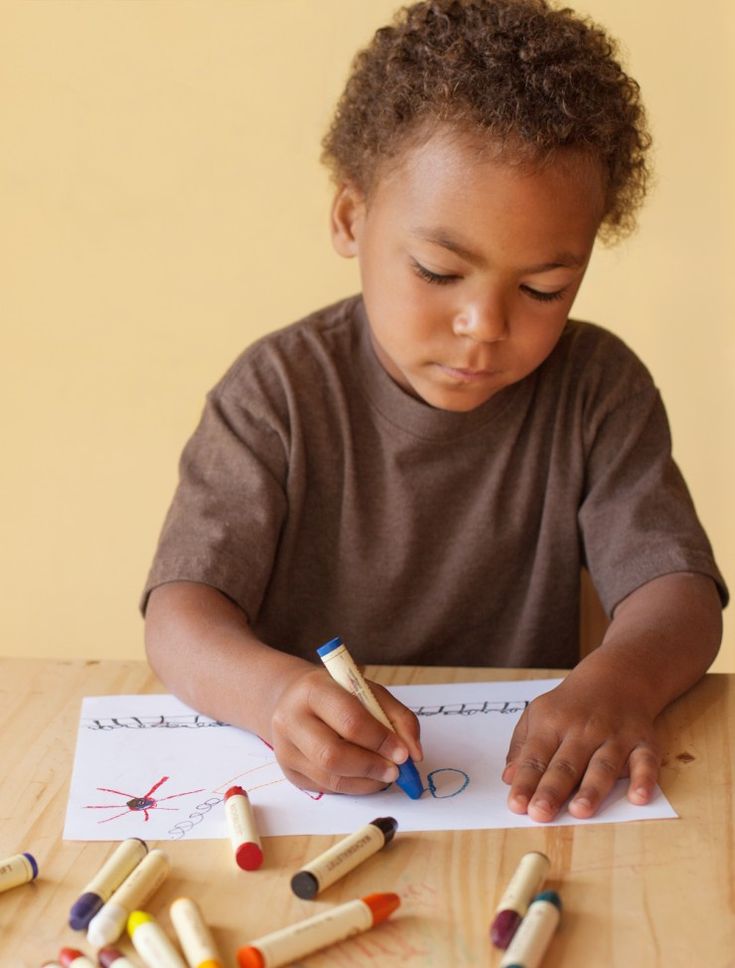 An additional plus of this exercise is the formation of elementary mathematical representations.
An additional plus of this exercise is the formation of elementary mathematical representations. - Games with covers. Here you can offer various containers and vessels with lids that the child will independently twist and unscrew. And if you tell your child that you can’t cope without him, you will give a motive to become your main assistant.
- Finger painting in the sand. Invite the child to draw with all fingers alternately geometric shapes or any other pattern that he wishes. Interaction with sand also has a positive effect on the central nervous system.
Lessons for the development of fine motor skills in children
In addition to games for the development of fine motor skills, you should engage in a variety of activities that children will undoubtedly like:
- modeling from plasticine, clay or dough;
- drawing or coloring with paints, pencils, crayons;
- construction from kits, paper, cubes;
- crafts made of paper, natural or waste materials;
- stringing beads, buttons on a string;
- mosaic picking;
- ball games;
- peeling fruits, e.
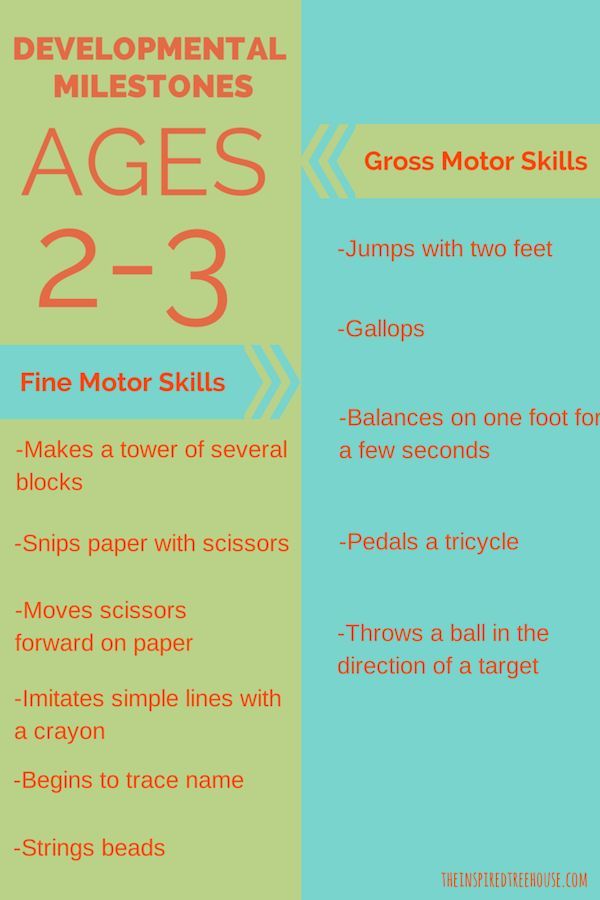 g. tangerines;
g. tangerines; - work with special manuals-copybooks.
Fine motor toys
What could be better for a child than a new toy? Only a toy that contributes to its comprehensive development.
- Massage embossed foot mats. Ideal to use after waking up to tone the body. You can purchase a puzzle mat that he can assemble and disassemble on his own. If you want to focus on the development of cognitive skills, you can purchase a rug with numbers or letters.
- Magnets. Place the magnets on the refrigerator or a special magnetic board. The child will definitely be interested in them, and will independently move them on the surface. Depending on the goal pursued, you can purchase magnets of various shapes, for example, in the form of numbers.
- Kinetic sand. Tactilely pleasant not only for children, but also for adults. Such sand does not get your hands dirty, so it will become a favorite toy for children and an assistant for adults.
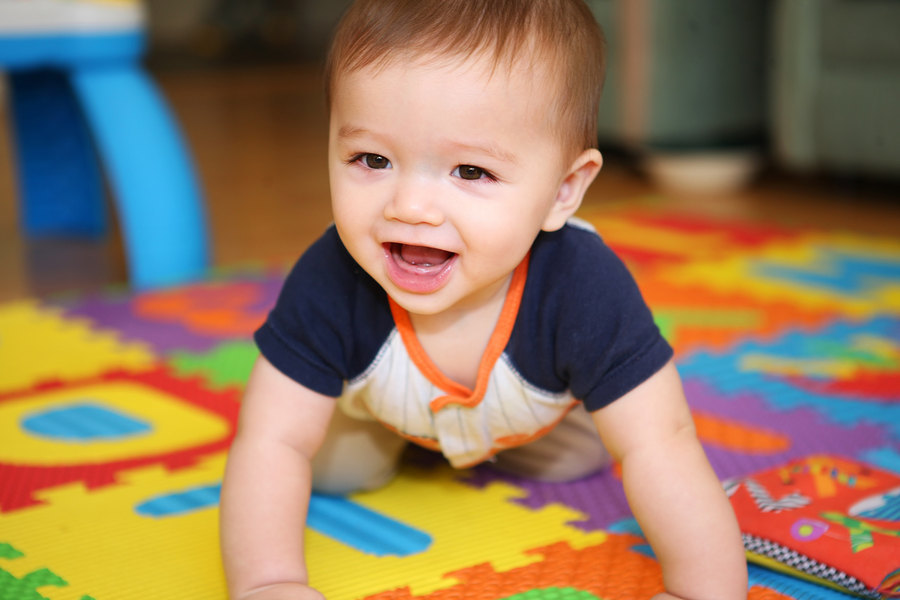
- Easel for drawing. There are options for easels on which you can draw on both sides: on the one hand - with special crayons, and on the other - with paints.
- Massage balls. Perfect for finger games. Thanks to the spikes, they actively affect the areas of the palms and fingers.
- Constructors. You can choose a set from any manufacturer. You should focus on safety for the child, age and gender. In addition to the development of fine motor skills, it stimulates the development of modeling and design skills.
- Finger Theatre. It combines the possibilities of the comprehensive development of the child. In addition, it improves the expressiveness of speech, memory, imagination, acting skills. This option should definitely be used if you notice that one hand is more developed than the other.
- Busyboard. Recently a popular manual for the development of fine motor skills. It is a wooden structure, on which various objects are attached on both sides.
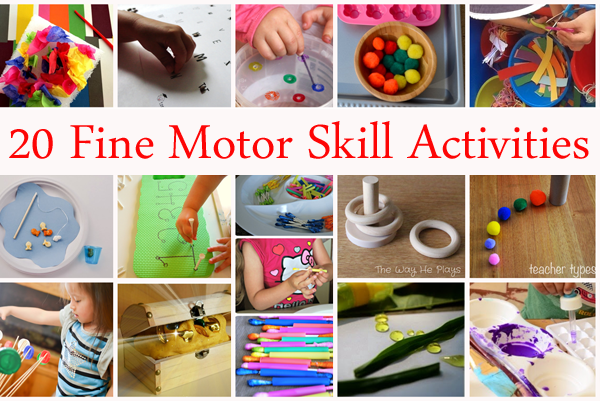 These can be laces, caps, locks, switches, gears, etc. Such a toy will help parents, as the baby can play it independently and safely.
These can be laces, caps, locks, switches, gears, etc. Such a toy will help parents, as the baby can play it independently and safely.
At what age should one develop fine motor skills?
It is important to pay attention to the motor skills of the hands for at least a few minutes every day.
- For children from nine months of age, pick up large items such as beads or pyramid rings.
- At the age of 1 year, you can organize games with natural materials: sand, clay, cones, pebbles, etc.
- After 2 years, the baby will be happy to do finger exercises with an adult. Saying various nursery rhymes along with hand movements will help to teach hand and tongue coordination. And also better remembered by the child himself.
- After 3 years, paper exercises should be used. Usually, by these years, the baby has mastered the skill of working with scissors, so it becomes possible to model applications.
- And from the age of 4-6, origami is mastered as one of the most difficult types of paper games.
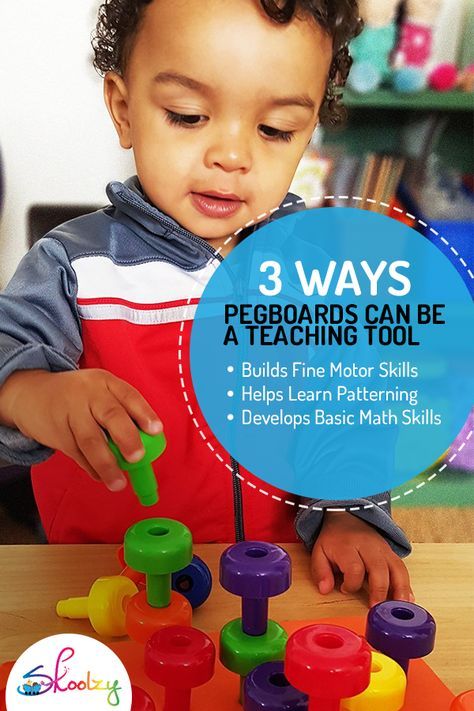
At whatever age you are engaged in the development of fine motor skills in children, it is necessary to organize this activity so that it brings not only benefit, but also pleasure to the child.
Conclusions
In the age of technological progress and the early use of phones, tablets and computers by children, other aspects of child development are regressing. And, first of all, speech suffers. The relationship between fine motor skills and speech, as well as the development of mental processes, has already been established.
Systematic work on the development of fine motor skills is necessary throughout the preschool period, since by the age of seven the brain areas responsible for its development have already been formed. A child, going to school, should be prepared for new loads, in particular, for mastering writing skills, and not learning how to hold a pen or pencil correctly. Lack of basic skills can lead to unstable self-esteem, inability to build social connections, and poor academic performance.
The network of children's development centers "Baby Club" will be happy to help in the development of fine motor skills of your child. A developing object-spatial environment, highly qualified specialists who love their work with all their hearts, and cozy groups will not leave anyone indifferent.
General development classes or specialized programs - the choice is yours. Contact us if your goal is to raise a developed, open, free, inquisitive little man.
Development of fine motor skills in children
Contents- General concept and features of fine motor skills of children
- Activities, games and exercises for the development of fine motor skills
All mothers know that children need to develop fine motor skills of hands. But not everyone knows how to do it correctly, and indeed what is fine motor skills and what features does it have? What activities, games and exercises should be done with children to develop motor skills? Let's consider all these questions in detail.
But not everyone knows how to do it correctly, and indeed what is fine motor skills and what features does it have? What activities, games and exercises should be done with children to develop motor skills? Let's consider all these questions in detail.
General concept and features of fine motor skills in children
Fine motor skills are the ability to perform small and precise movements with hands and fingers and toes as a result of coordinated actions of the most important systems: nervous, muscular and bone. With regard to the motor skills of the hands and fingers, the term dexterity is often used. The fine motor area includes a wide variety of movements, from simple gestures (such as grasping a toy) to very complex movements (such as writing and drawing).
The development of fine motor skills plays an important role in the overall development of the child. Fine motor skills develop from the newborn. First, the baby looks at his hands, then learns to control them.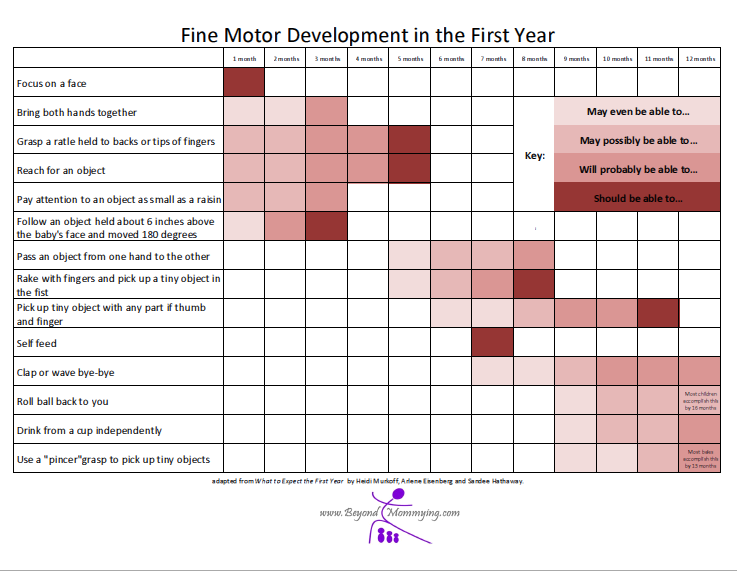 First, he takes objects with the whole palm, then only with two (thumb and forefinger) fingers. Then the child is taught to properly hold a spoon, pencil, brush.
First, he takes objects with the whole palm, then only with two (thumb and forefinger) fingers. Then the child is taught to properly hold a spoon, pencil, brush.
Fine motor skills have a very important feature. It is associated with the nervous system, vision, attention, memory and perception of the child. Also, scientists have proven that the development of fine motor skills and the development of speech are very closely related. And this is explained very simply. In the brain, speech and motor centers are located very close to each other. Therefore, when the motor skills of the fingers are stimulated, the speech center begins to activate. That is why for the timely development of the child's speech, great attention must be paid to the development of fine motor skills. Fine motor skills directly affect manual dexterity, handwriting, which will be formed in the future, and the reaction speed of the child.
According to the peculiarities of the development of fine motor skills of the child, in the future they judge his readiness for studying at a school institution.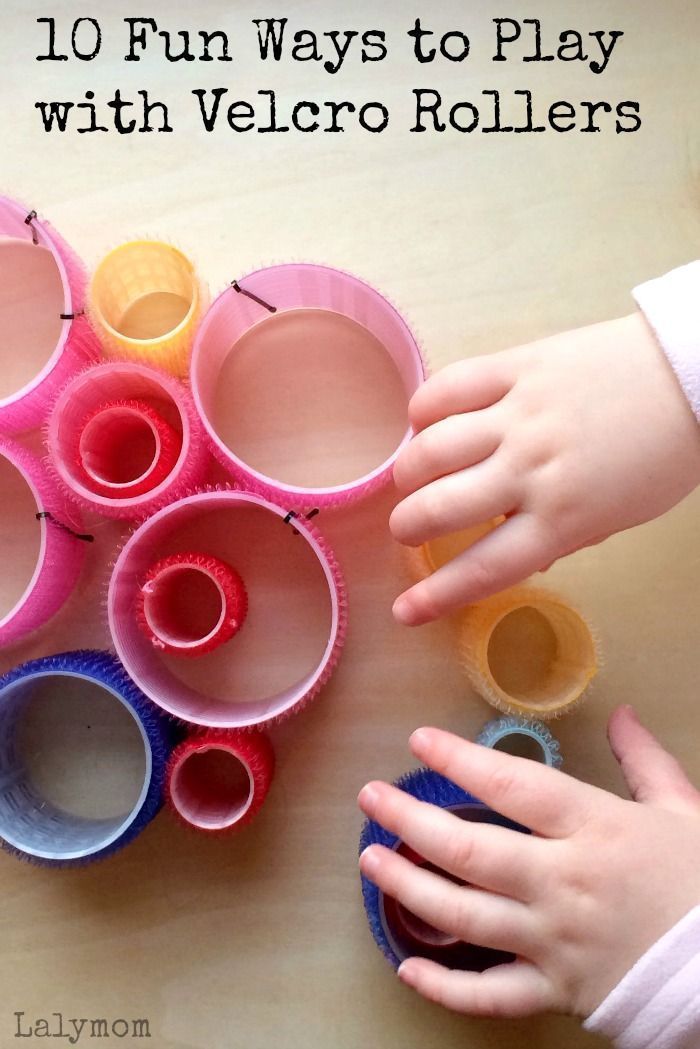 If everything is in order, then the child is prepared for learning to write, knows how to think and reason logically, has a good memory, concentration, attention and imagination, coherent speech.
If everything is in order, then the child is prepared for learning to write, knows how to think and reason logically, has a good memory, concentration, attention and imagination, coherent speech.
Fine motor skills develop gradually, this is an individual process and each child goes through it at his own pace. At first, the baby's movements are awkward, inept and inharmonious. To help the baby improve fine motor skills, you need to play educational games with him (the online magazine "Razvitie" has articles about educational games for children at 1 year old, as well as games for the development of children at 2 years old).
Activities, games and activities to develop fine motor skills
There are many activities, games and activities to develop fine motor skills. They can be divided into the following groups: finger games, games with small objects, modeling and drawing, finger massage. Articles about the development of the child according to the Montessori system, as well as about the Montessori games, will also be interesting.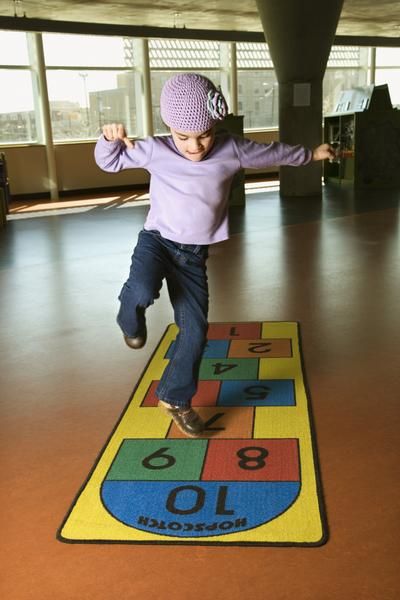
Consider the most simple and effective games:
1. Hand massage
This is the easiest and most versatile way to develop fine motor skills for all ages. Run your finger along the child's palms, stroke them and massage. Accompany your actions with the saying “Magpie-Crow”.
2. Ladushki
Everyone knows the nursery rhyme “Ladushki-ladushki” since childhood. This game will teach the little ones to straighten their fingers and clap their hands.
3. Paper tearing
This exercise is suitable for babies from 7 months. Give your baby a few sheets of soft colored paper. He will feel it with pleasure, begin to turn it in his hands and tear it. This occupation will give him untold pleasure.
4. Turning pages
After a year, tearing the paper can be replaced by turning the pages of a picture book or magazine.
5. Beads
Children love to touch small objects, which is very useful.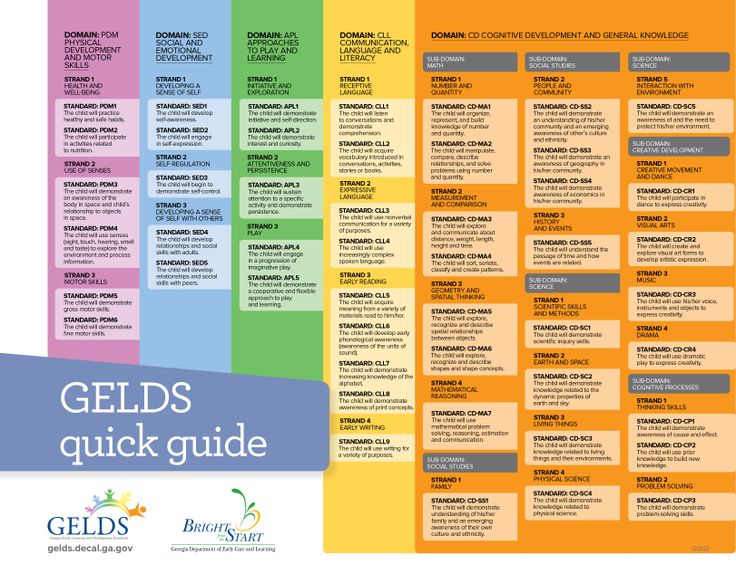 Therefore, you can put on some beads with beads of various sizes and shapes. The child will touch them with his fingers with joy and interest.
Therefore, you can put on some beads with beads of various sizes and shapes. The child will touch them with his fingers with joy and interest.
6. Cup inserts
You can build turrets out of them, put them into each other. This game develops the child's concept of the size of objects.
7. Cereals
Pour any cereal into a bowl and give it to the baby. He will touch the cereal with his hand or spill it through his fingers. This game develops fine motor skills and tactile sensations well.
8. Cereal jars
Fill the jars with different cereals and let the child take turns putting their hand into each of the jars. So he can feel different grains and take them with his fingers. You can complicate the task. In front of the child, bury some small object in the cereal and give him a jar. Let him try to find this item.
9. Sand painting
Pour sand onto the tray. Take the child's finger in your hand and run it across the sand.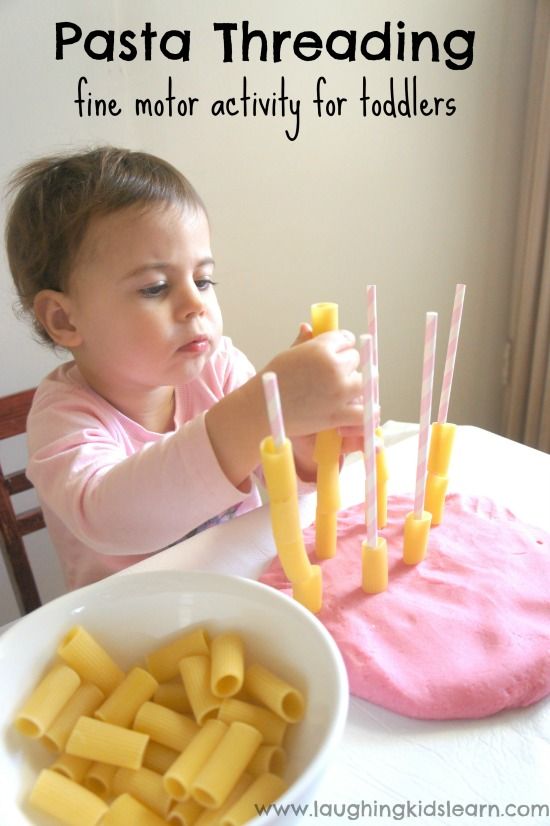 You can start with simple shapes - lines, a rectangle, a circle, gradually complicating the task.
You can start with simple shapes - lines, a rectangle, a circle, gradually complicating the task.
Fine Motor Toys
10. Pea
You will need a pea and a jar with a removable lid. Show the child that you first need to remove the lid, then take the pea with your fingers and put it in a jar, then close the lid. Ask your child to do the same. Don't be discouraged if it doesn't work the first time. Show the baby the whole chain of actions slowly several times and then he will definitely be able to repeat everything. Active children quickly get bored with this game, in this case there is no need to force them. Offer the child another game.
11. Screwing caps
Such a simple activity as screwing and unscrewing the caps of cans, bottles, vials develops finger dexterity. Offer your baby vessels of different sizes and shapes, this will make the game more diverse.
12. Zipping, unzipping and lacing
No additional toys are required for this exercise.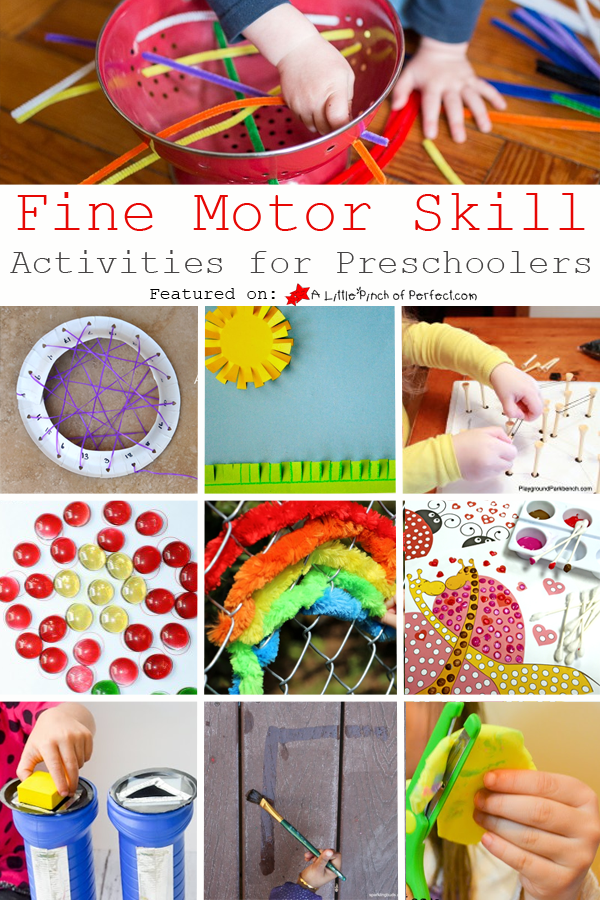 Gradually include the child in the process of dressing. Let him fasten and unbutton his own buttons and zippers. This will not only develop hand movements, but also teach the child to be independent. Also, give your child some unnecessary lace-up shoes that will be a great hand trainer.
Gradually include the child in the process of dressing. Let him fasten and unbutton his own buttons and zippers. This will not only develop hand movements, but also teach the child to be independent. Also, give your child some unnecessary lace-up shoes that will be a great hand trainer.
13. Sculpting
Sculpting is suitable for children of all ages. Plasticine, clay, dough are suitable for modeling. When you are going to bake something, be sure to bring your child with you. He will love to knead and roll out the dough. In addition, he will be proud that he helps his mother.
Fine motor skills exercises
14. Drawing and coloring
It is very useful to trace the outline of the pictures, consisting of dotted lines, and to color objects of various shapes. It is very useful to draw on vertical surfaces: wall, blackboard, mirror. Therefore, it is advisable to hang a special board for the baby so that he draws.
15. Collecting mosaics and puzzles
For children under 3 years old choose puzzles and mosaics with large pieces.

